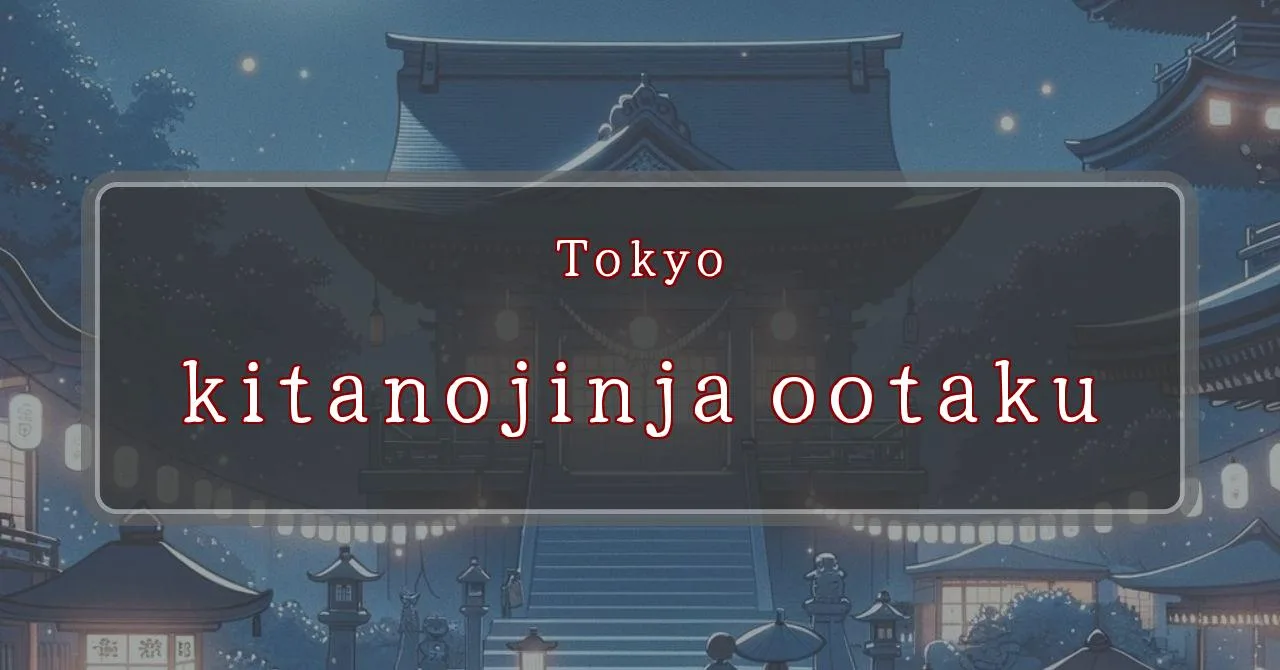Enchanting lights adorn Kita-no Shrine’s night festival.
Basic Information
Here’s an overview of the Kita-no Shrine in Ota Ward, Tokyo.
- Address: 1-6-5 Minami Kamata, Ota City, Tokyo
- Phone Number: 03-3731-1004
- Access: A short walk from Keikyu Kamata Station
- Festival Days: May 20th (Sat) and 21st (Sun), 2024
Main Events and Attractions of the Festival
The Kita-no Shrine Festival in Ota Ward, Tokyo, offers a variety of exciting events and attractions for visitors of all ages.
Mikoshi Procession
One of the main highlights of the festival is the mikoshi procession. A mikoshi is a portable shrine carried through the streets by participants, and it is believed that the deity enshrined within the mikoshi brings good luck and protection to the community. The mikoshi procession at Kita-no Shrine is a lively and colorful event, with participants chanting and singing as they carry the mikoshi through the streets.
Kagura Performance
Kagura is a traditional Japanese performing art that combines music, dance, and storytelling. During the Kita-no Shrine Festival, kagura performances are held in the shrine’s main hall. These performances are a beautiful and captivating way to learn about Japanese culture and history.
Lion Dance
The lion dance is another popular attraction at the Kita-no Shrine Festival.獅子舞 (Shishimai) is a traditional Japanese dance performed by a dancer wearing a lion costume. The lion dance is believed to bring good luck and ward off evil spirits, and it is a lively and entertaining performance that is sure to delight visitors of all ages.
Food Stalls
No Japanese festival is complete without food stalls! At the Kita-no Shrine Festival, visitors can enjoy a wide variety of delicious Japanese street food, including takoyaki, yakisoba, and cotton candy. There are also many stalls selling souvenirs and traditional Japanese crafts.
Blessings and Deities
Kita-no Shrine is dedicated to the deities Sugawara no Michizane and Takehaya Susanoo no Mikoto. Sugawara no Michizane is a scholar and politician who is revered as the god of learning and calligraphy. Takehaya Susanoo no Mikoto is a powerful deity associated with storms, the sea, and agriculture.
- Sugawara no Michizane: God of learning and calligraphy
- Takehaya Susanoo no Mikoto: God of storms, the sea, and agriculture
Origin and History
The origins of Kita-no Shrine are unclear, but it is believed to have been founded in the 17th century. The shrine was originally located in a different part of Ota Ward, but it was moved to its current location in the early 20th century.
- Founded: 17th century
- Original location: Different part of Ota Ward
- Current location: Early 20th century
Tips and Notes for Visitors
Here are some tips and notes for visitors to Kita-no Shrine:
- Hours: The shrine is open from 9:00 AM to 5:00 PM daily.
- Admission: Admission to the shrine is free.
- Dress code: Visitors are expected to dress respectfully when visiting the shrine.
- Photography: Photography is allowed inside the shrine, but visitors are asked to be respectful of other visitors and the shrine’s staff.
- Parking: There is no parking lot at the shrine, but there are several public parking lots nearby.
Parking Information
There is no parking lot at Kita-no Shrine, but there are several public parking lots nearby.
- Kamata Station Parking Lot: A short walk from Keikyu Kamata Station
- Minami Kamata Station Parking Lot: A short walk from Keikyu Minami Kamata Station
- Ota Ward Office Parking Lot: A short walk from Kita-no Shrine
Popular Stalls and Food Carts in Recent Years
| Type of Stall | Description |
|---|---|
| Takoyaki | A staple at Japanese festivals. Characterized by a crispy outside and a creamy inside. |
| Jaga Butter | A simple yet popular snack of hot potatoes lavishly topped with melted butter. |
| Baby Castella | Small castella cakes, sweet and fluffy treats enjoyed by children and adults alike. |
| Grilled Ayu with Salt | Fresh ayu fish grilled whole with salt, a savory taste of Japanese summer. |
| Shaapin | A unique gourmet item influenced by foreign cuisine, with a chewy skin wrapping the filling. |
| Okonomiyaki | A Japanese grilled dish where you often choose your own ingredients for a personalized flavor. |
| Cotton Candy | A fluffy, sweet snack that’s extremely popular with children. |
| Chocolate Banana | A banana coated in chocolate, a fun and visually appealing dessert. |
| Kushiyaki | Various types of ingredients skewered and grilled, an easy-to-enjoy snack. |
| Yakisoba | Fried noodles mixed with a special sauce, a fast food favorite in Japan. |



